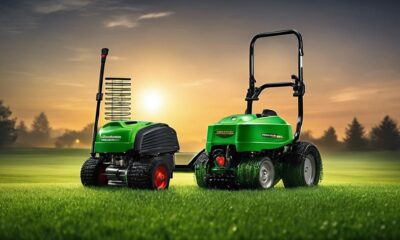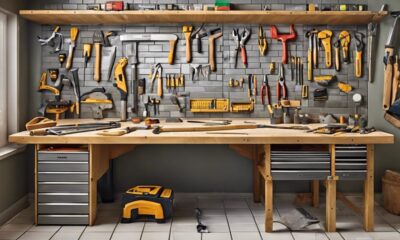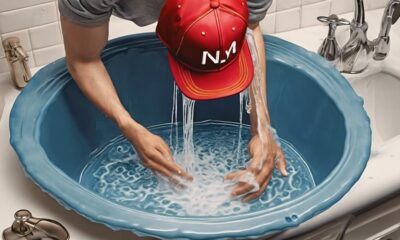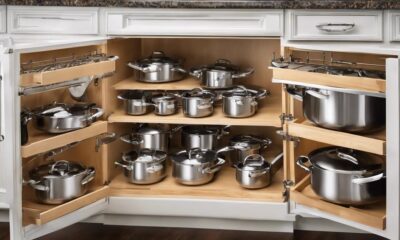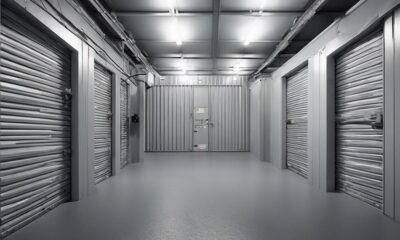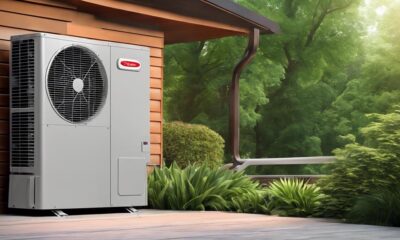Beginners Guides
Can You Substitute Water for Milk in Pancake Mix
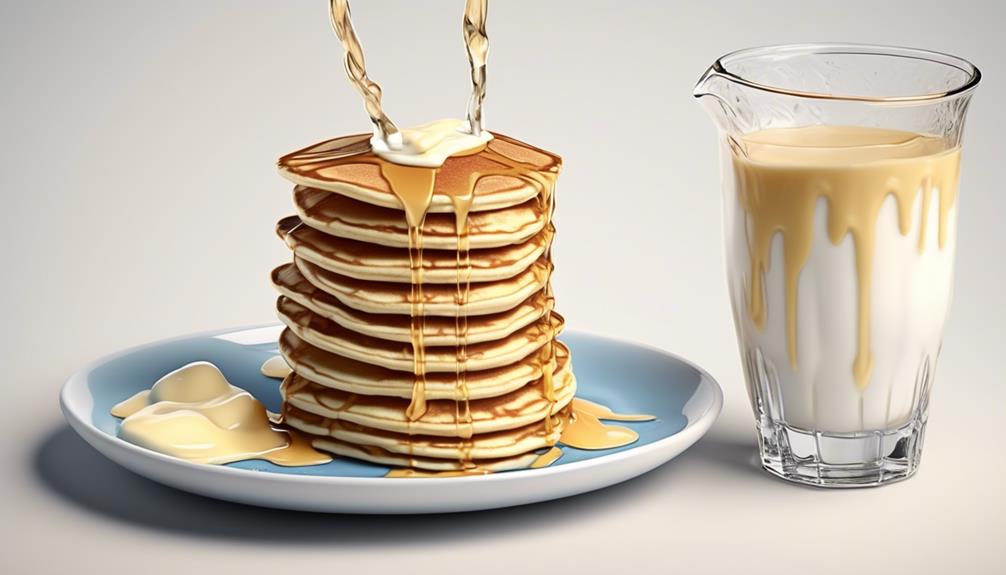
Is it possible to replace milk with water in pancake mix?
Many of us have been in a situation where we're craving pancakes, only to realize we're out of milk. It's a common conundrum that leads to the question of whether water can be used as a substitute.
The answer isn't as straightforward as you might think. While the idea of using water instead of milk may seem simple, the implications for texture, flavor, and overall pancake quality are worth considering.
Let's explore the pros and cons of this substitution and discover how to achieve the best results when faced with a milk shortage.
Key Takeaways
- The choice between water and milk in pancake mix significantly impacts the texture, flavor, and structure of the pancakes.
- Using water instead of milk can result in a taste difference, nutritional impact, texture alteration, and less desirable browning and caramelization.
- When substituting water for milk in pancake mix, adjustments to the recipe may be necessary to maintain desired consistency and texture.
- Tips for achieving fluffy pancakes with water include using a gentle whisking technique, allowing the batter to rest before cooking, preheating the griddle or pan properly, and adjusting the amount of water for desired batter consistency.
The Importance of Liquid in Pancake Mix
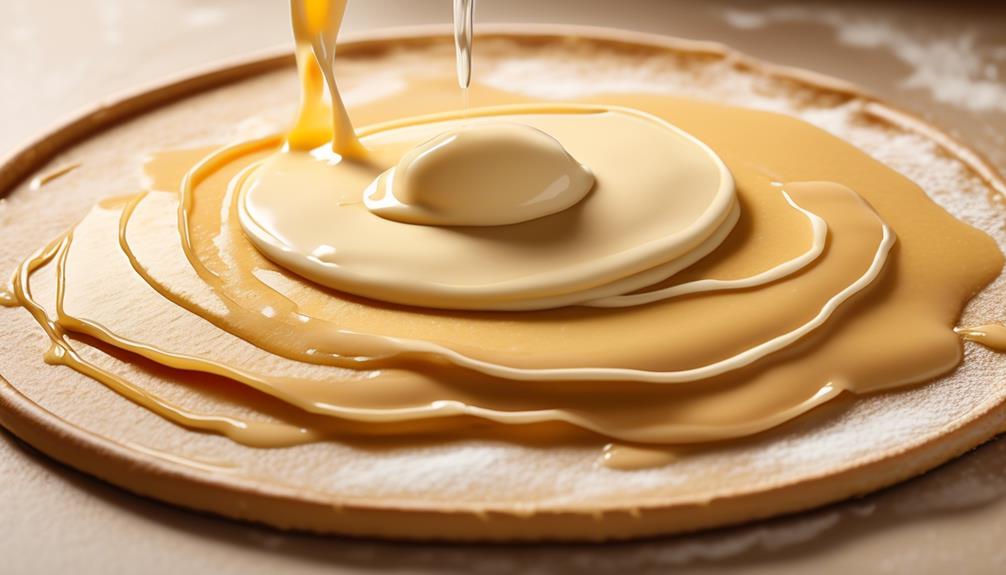
Using water or milk as the liquid component in pancake mix significantly influences the texture, flavor, and structure of the final product. Liquid consistency plays a crucial role in determining the outcome of the pancakes.
When water is used, the resulting batter tends to be thinner, leading to pancakes with a lighter and airier texture. On the other hand, using milk produces a thicker batter, yielding pancakes that are richer and more substantial in texture.
Additionally, the choice between water and milk introduces nutritional differences. Milk adds protein, calcium, and other essential nutrients to the pancake batter, contributing to its overall nutritional value. In contrast, using water reduces the calorie and fat content of the pancakes, making them a lighter option.
Therefore, the decision regarding which liquid to use not only affects the physical characteristics of the pancakes but also influences their nutritional profile. Understanding these differences allows for a more informed decision when choosing the liquid component for pancake mix, enabling individuals to tailor their pancakes to their preferences and dietary needs.
Effects of Using Water Instead of Milk
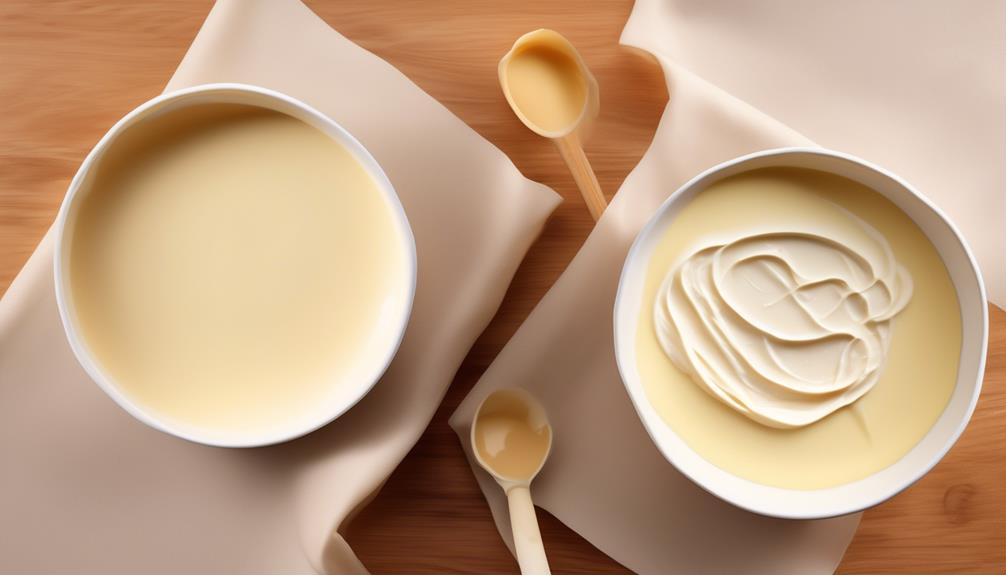
The influence of the liquid component in pancake mix on the texture, flavor, and nutritional profile is crucial, and the shift from milk to water yields distinct effects on the final product.
When substituting water for milk in pancake mix, we observe the following effects:
- Taste difference: The use of water instead of milk can result in a noticeable difference in the taste of the pancakes. Milk adds a subtle sweetness and richness to the batter, which water lacks, leading to a less flavorful end product.
- Nutritional impact: Milk is a good source of essential nutrients such as calcium, protein, and vitamins D and B12. When water is used instead, the nutritional value of the pancakes is significantly reduced, impacting their overall health benefits.
- Texture alteration: Milk contributes to the tenderness and moistness of pancakes due to its fat and protein content. In contrast, water can lead to a drier and less tender texture, affecting the overall mouthfeel of the pancakes.
- Browning and caramelization: Milk contains natural sugars which aid in browning and caramelization during the cooking process. Substituting water may result in less desirable color and flavor development.
These effects highlight the importance of the choice between water and milk in pancake mix, as it significantly impacts the sensory and nutritional aspects of the final product.
Adjusting the Recipe for Water Substitution
When substituting water for milk in a pancake recipe, it's important to adjust the amount of liquid to maintain the desired consistency and texture of the batter. Ingredient differences play a crucial role in this adjustment.
Milk contains fats, proteins, and sugars that contribute to the flavor, texture, and browning of the pancakes. When using water, which lacks these components, the recipe needs to be adjusted to compensate for the missing elements. To maintain a similar texture and flavor, consider adding a small amount of melted butter or oil to the batter when using water instead of milk. This addition can help replace some of the fats lost by omitting milk from the recipe.
Moreover, cooking techniques may need to be adjusted when substituting water for milk. Due to the absence of milk proteins, pancakes made with water may require slightly different cooking times and temperatures to achieve the desired golden-brown color and texture. Additionally, the absence of sugars in water may impact the caramelization process during cooking, so monitoring the heat and adjusting cooking times may be necessary to ensure the pancakes are properly cooked.
Tips for Achieving Fluffy Pancakes With Water

To achieve fluffy pancakes when substituting water for milk, we recommend incorporating the use of carbonated water in the pancake batter. Carbonated water helps to create a light and airy texture in the pancakes, resulting in a fluffy and delightful outcome.
Here are some tips for achieving fluffy pancakes with water:
- Whisking Technique: Use a gentle hand when whisking the batter. Overmixing can lead to dense pancakes. Incorporate the carbonated water into the batter with a folding motion to maintain its effervescence.
- Resting Time: Allow the batter to rest for a few minutes before cooking. This gives the carbonated water a chance to interact with the other ingredients, contributing to a fluffier texture.
- Cooking Temperature: Preheat the griddle or pan properly. Cooking pancakes over medium heat ensures that they cook evenly and rise to a fluffy consistency.
- Thickness of Batter: Adjust the amount of water to achieve the desired batter consistency. A slightly thicker batter can help the pancakes hold the bubbles from the carbonated water, resulting in a fluffier pancake.
Exploring Dairy-Free Alternatives
Exploring dairy-free alternatives involves investigating plant-based milk options that can effectively replace dairy milk in pancake mix, maintaining the desired texture and flavor without compromising on nutritional value.
When considering dairy-free options, it's essential to compare the nutritional content of different plant-based milks to ensure that the substitution maintains the same level of essential nutrients. For instance, almond milk is low in calories and provides healthy fats, while soy milk offers a similar protein content to dairy milk. Coconut milk, on the other hand, contains higher amounts of saturated fats. These nutritional differences can impact the overall quality of the pancake mix and should be taken into account when making a substitution.
Careful consideration of the nutritional profiles of various plant-based milks is crucial for achieving a successful dairy-free alternative in pancake mix. It's important to assess the protein, fat, carbohydrate, and micronutrient content of each milk to ensure that the chosen alternative aligns with the desired nutritional goals. By comparing these factors, one can make an informed decision that not only meets dietary preferences but also maintains the integrity of the pancake mix.
Frequently Asked Questions
What Is the Best Type of Water to Use When Substituting for Milk in Pancake Mix?
When substituting water for milk in pancake mix, the best water options are filtered or spring water. These options ensure a clean taste and help maintain the texture of the pancakes.
However, keep in mind that using water instead of milk may result in a less creamy and slightly blander taste.
As for health implications, choosing clean water sources is essential to avoid any potential contaminants in the pancake mix.
Can I Use Flavored Water, Such as Coconut Water or Fruit-Infused Water, as a Substitute for Milk in Pancake Mix?
Absolutely, flavored water substitutes like coconut water or fruit-infused water can be used as a creative alternative for milk in pancake mix. These options can impart a subtle, complementary flavor to your pancakes.
When incorporating flavored water, it's important to consider its sweetness and adjust the sugar content in the recipe accordingly.
Experimentation with different flavors can lead to unique and delicious pancake creations.
Are There Any Potential Health Benefits to Using Water Instead of Milk in Pancake Mix?
Using water instead of milk in pancake mix may offer potential benefits for those seeking to reduce dairy intake or calories.
However, it's important to note that the nutritional comparison between water and milk shows that milk provides essential nutrients like protein, calcium, and vitamins.
While water can be a suitable substitute, it's essential to consider the potential impact on overall nutritional intake when making this substitution.
Can I Use Sparkling Water or Soda Water as a Substitute for Milk in Pancake Mix?
Yes, sparkling water or soda water can be used as a substitute for milk in pancake mix.
When substituting, consider the type of water used. Sparkling water adds lightness, while soda water may impart a slightly salty flavor.
Both can work, but the best type of water for substituting milk in pancake mix depends on personal preference.
Experiment to find the perfect texture and taste for your pancakes.
How Does Using Water Instead of Milk in Pancake Mix Affect the Taste and Texture of the Pancakes?
Using water instead of milk in pancake mix can significantly alter the taste and texture. Taste comparison reveals a less rich and creamy flavor with water, while the texture analysis indicates that pancakes made with water may be less fluffy and dense compared to those made with milk.
The absence of milk's fat and proteins in water-based pancakes can result in a less tender and moist texture.
Will Adding an Egg to Pancake Mix Change the Consistency if I Substitute Water for Milk?
Yes, adding an egg to pancake mix will change the consistency compared to just using water. The egg adds richness and helps bind the ingredients together, resulting in a fluffier and more flavorful pancake. The substitution of water for milk will also have an impact, as milk adds moisture and tenderness to the pancakes.
Conclusion
In conclusion, substituting water for milk in pancake mix can be done, but it may affect the texture and flavor of the pancakes. It's like trying to make a cake without eggs – possible, but not quite the same.
By adjusting the recipe and following some tips, you can still achieve fluffy pancakes with water. However, for those looking for dairy-free alternatives, there are plenty of options available to explore.
- About the Author
- Latest Posts
Introducing Ron, the home decor aficionado at ByRetreat, whose passion for creating beautiful and inviting spaces is at the heart of his work. With his deep knowledge of home decor and his innate sense of style, Ron brings a wealth of expertise and a keen eye for detail to the ByRetreat team.
Ron’s love for home decor goes beyond aesthetics; he understands that our surroundings play a significant role in our overall well-being and productivity. With this in mind, Ron is dedicated to transforming remote workspaces into havens of comfort, functionality, and beauty.
Beginners Guides
Modern Danish Design – 10 Tips To Bring It Home
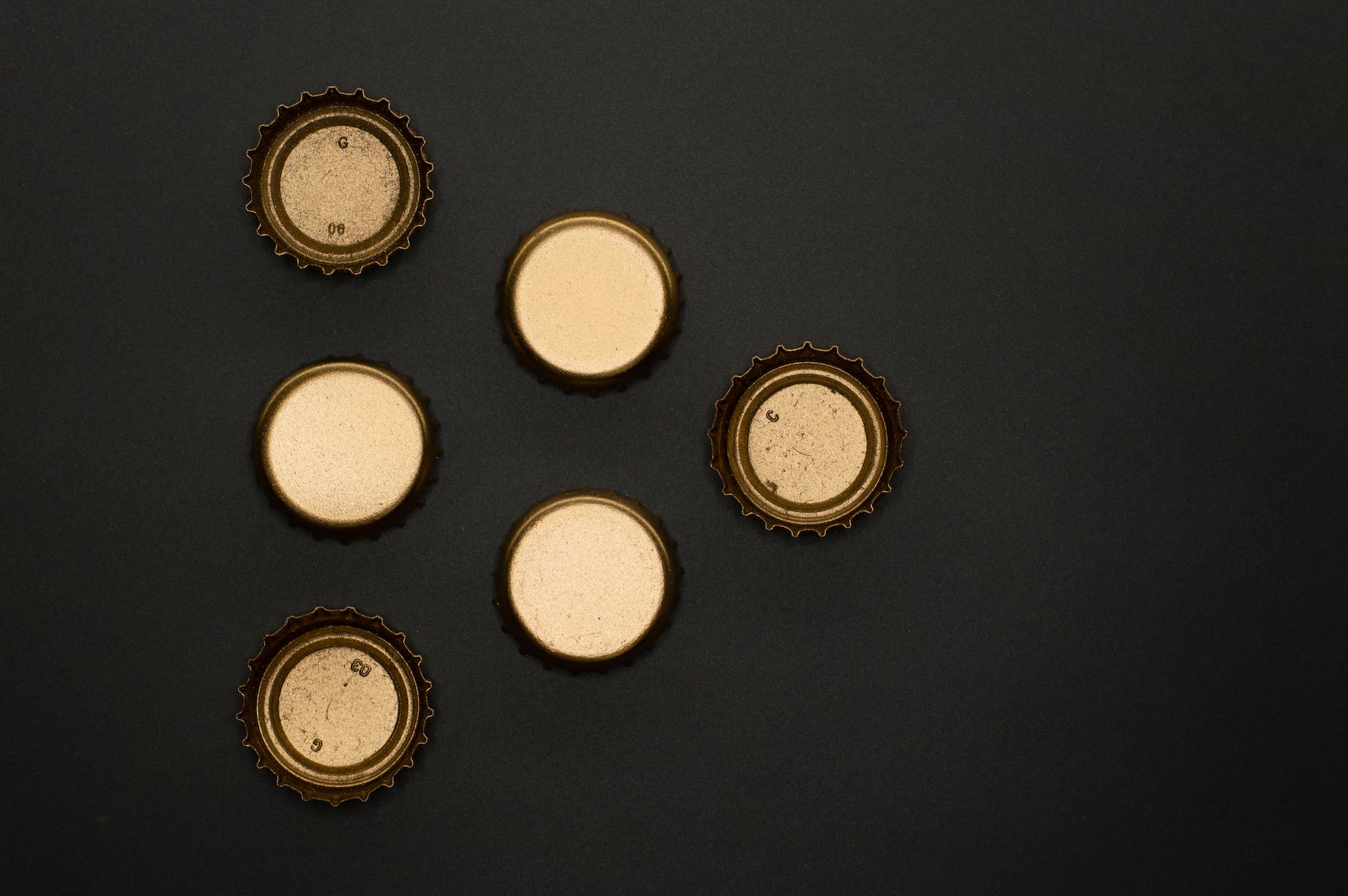
You can bring Modern Danish Design into your home in various ways. The key is to embrace the concept of Hygge, or coziness. This can be accomplished by adding corner sofas and other comfortable furniture pieces. Additionally, lighting, plants, and other small details can also contribute to creating a cozy atmosphere.
Hygge is a Danish design idea

You can add architectural designs to your furniture or decorations to bring hygge to your home. Hygge refers to living in a more relaxed and peaceful environment. You can enhance your home’s natural beauty with natural materials. Plants can be placed in empty corners to add life and beauty to your home. Plants can clean your home. An aquarium or small indoor waterfall can bring nature inside your home.
Hygge is all about soft and plush textures. They provide comfort and sound absorption. You can use them to modify the decor in your home. To create a cozy atmosphere, thick, jewel-colored wool rug can be used during the winter months. Natural jute rugs are also available during warmer months.
Hygge is an idea that has been around since the beginning of time but has gained popularity in America. Hygge has been the subject of many books and articles in the last two years. The Oxford Words of the Year also includes the concept.
Natural lighting
Danish design is known for its popular motif of candlelight. It creates a warm and romantic atmosphere. Since the 20th century, many designers have tried to replicate this effect using electric lights. These five unique Danish lighting fixtures show that modern design can still create an inviting atmosphere.
The PH 5 Pendant is a timeless Danish design. Poul Henningsen designed this pendant. It has an unusual angled shape that diffuses light. These lights come in a variety of styles and finishes. You can choose a PH5 Pendant based upon the style and colour of your room.
The UK is also home of Danish modern design. It has open floor plans and sleek furniture. It’s also well-known for creating a calm atmosphere that helps to relieve the stress of modern life.
Wooden details
Modern Danish design features wood as a common feature. This gives homes a warm, inviting feeling. Danish people love entertaining, so they have large wooden tables, cabinets, fireplaces, and other features. Natural wood tones are prominent and the details are often very simple. Sometimes, wood details can be combined to give a more sophisticated look.
Modern Danish designs often have a slightly different wood grain. These pieces are usually made of teak or European oak wood. To highlight the natural grain, the wood is lightly polished. Modern Danish design features a minimalist aesthetic. To create modern, Scandinavian-inspired pieces, designers often focus on natural materials, including teak, rosewood, and European oak.
Danish modernism also features unusual names and shapes. The Klint Stool, Jacobsen’s egg chair and Jacobsen’s stool are two examples. The chairs were designed by these two men who were inspired by the natural world. Jacobsen also designed a chair that looks like an ant’s legs.
Plants
Modern Danish design emphasizes simplicity. Danish people don’t like clutter on their tables or sideboards. They like clean, simple spaces made from natural and elegant materials. To create contrast between materials and textures, use a soft touch with neutral colours.
Hygge is key to bringing this design into your home. Hygge promotes harmony and well-being by being rooted in the small things of life. Hygge also means to enjoy the moment. Hygge is a popular design concept and home decor. It focuses on natural materials and transparent textures.
The key element is light. Contemporary chandeliers and sphere tables lamps can create tranquil pools of light that increase the sense of hygge within a space.
Unmade beds
Danish designers like to keep things simple. Unmade beds can be a great way to create an intimate feeling. Niki Brantmark is the author and designer for My Scandinavian Home. She recommends that bed sheets not be ironed or wrinkled. Modern Scandinavian design requires stonewashed linen.
Twinkly lights
Twinkly lights are a wonderful addition to your hygge decor. They can be used almost anywhere and emit a more tranquil light than candles. The heart of Danish culture is the fireplace. It is a wonderful place to gather with family and friends. It is a symbol of warmth and fire, so it makes sense to share it with the ones you love.
The Danish design firm Muuto has created the Unfold pendant, which adds twinkling light to any room . It is made of soft silicone and available in a variety of colors. It’s slim and can fit in any space.
Scandinavian design places a strong emphasis on functionality and craftsmanship. Scandinavians are close to nature and their products reflect this. Lumens has a variety of Scandinavian-based brands, so there is something for everyone.
Natural textures
If you’re looking for Scandinavian-inspired decor, consider adding some natural textures to your home. The Ferm Living Anse Vase and Pot are modern designs made from natural sand-colored clay. It is a great touch to have the balanced cylindrical handle and hand-formed handles. These handles are also available in a variety of sizes and neutral colors.
Danish design is known for its simple, minimalist style. Because of its sleek design, the furniture is ideal for small homes and apartments. The Scandinavian interior design is known for its use of neutral tones in the living room and bedrooms. This style is all about functionality. Alvar Aaltos’ stackable stool is an example of this style. It combines simplicity and function. The hygge design concept is a key component of Scandinavian design. It is Danish for “warm colors-for-a cozy-teenage girl-room coziness”. A Nordic room will look cozy and warm with natural textures and warm colours.
Color palette
Modern Danish design colors emphasize natural elements. They can be used in many different ways. You can use browns, greens, and blues to create a relaxing space. Fresh flowers and plants can bring life to your home. This interior design style focuses on simplicity, functionality, natural materials, and elegance.
Modern Danish design’s color palette reflects Scandinavian minimalism, and is connected to the natural world. Danish design is well-known for its uncluttered spaces and slab doors. You can incorporate this look into your home, whether you are a modern homeowner or a Working From Home professional.
The Scandinavian color palette consists of neutral tones mixed with pops of color. It also uses organic materials like wool and wood. Because of their closeness to nature, the Nordic countries use neutral colors to counter the often dark and cold winter months. You can add warmth to this palette by using modern wall art and pops of color.
- About the Author
- Latest Posts
Introducing Ron, the home decor aficionado at ByRetreat, whose passion for creating beautiful and inviting spaces is at the heart of his work. With his deep knowledge of home decor and his innate sense of style, Ron brings a wealth of expertise and a keen eye for detail to the ByRetreat team.
Ron’s love for home decor goes beyond aesthetics; he understands that our surroundings play a significant role in our overall well-being and productivity. With this in mind, Ron is dedicated to transforming remote workspaces into havens of comfort, functionality, and beauty.
Beginners Guides
DIY Small Craft Room Ideas
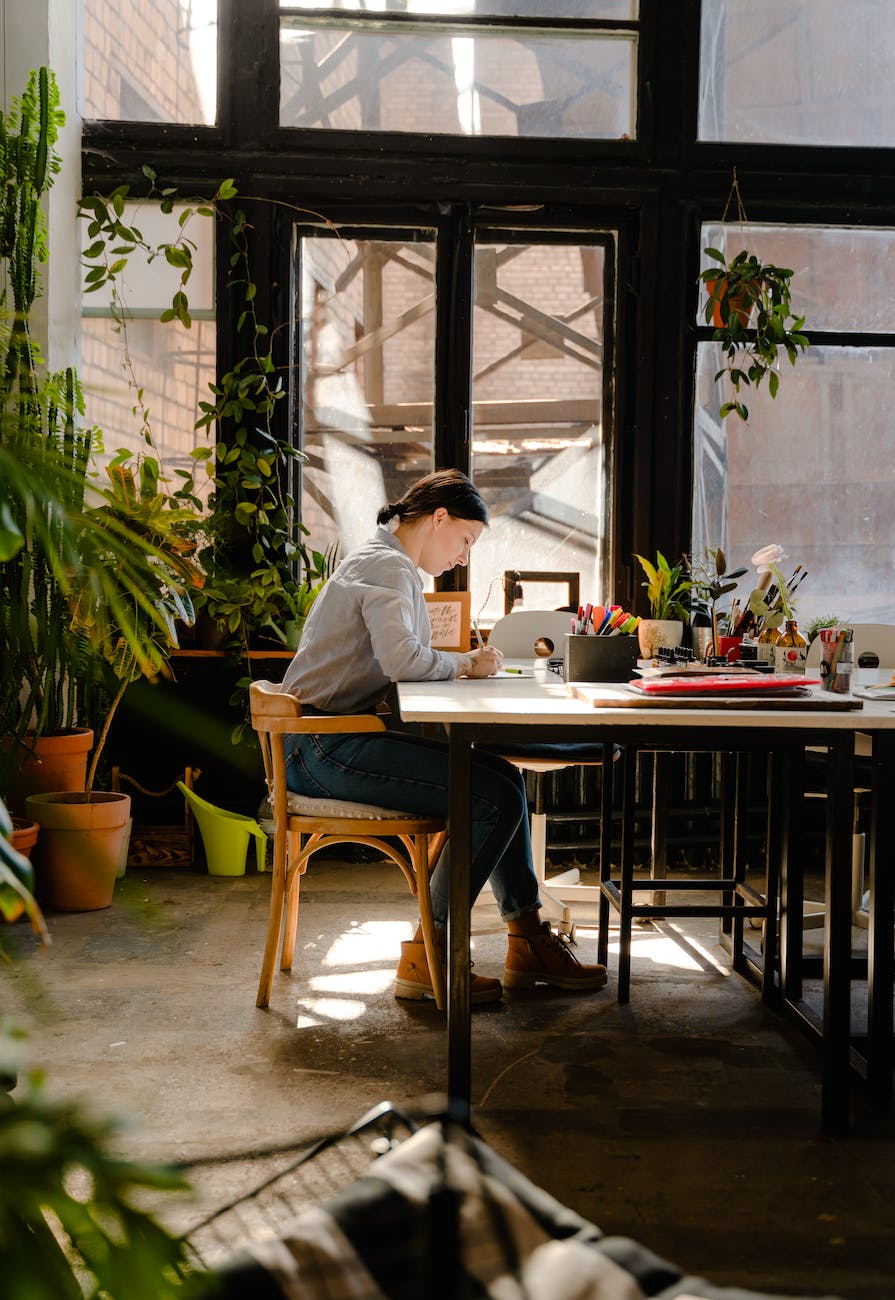
A compact DIY crafting space is ideal for showcasing your creative talents. There are numerous ways to optimize space while keeping costs low. Effective storage is key in a crafting area. Small crafting spaces can benefit from wall-mounted storage solutions like a pegboard or metal grid. Utilize hangers to neatly store craft supplies, or opt for a mix of baskets and boxes for additional storage options.
Shelving units with open and closed shelves
Both open and closed shelving units can be used to make your craft room appear more spacious and organized. Open shelving allows you to easily see what your room has, but too many open shelves can create a feeling of clutter. Open shelving should not be used excessively.
Floating shelves
Floating shelves can be a great option if you have limited space. These shelves are the ideal way to store all types of stuff. Large open shelving units can be combined with drawers and shelves to provide ample storage. Alternative to shelves, ledges can be used.
Lazy Susan
A Lazy Susan makes storage a breeze. You can use this piece to organize small items, no matter how small your craft area is. You can organize your crafting supplies by spinning it and rotating them on it. Lazy Susans can also be used to decorate shelves. It can store small items or flower vases.
Glass shelf
A glass shelf can be a great way to organize your crafting supplies. This storage solution works well for Cricuts. You can also store scissors and other supplies.
Rolling storage carts
Rolling storage carts can be great for people with limited space. These carts can be placed under your desk or in your closets and allow you to easily access your crafting supplies. You can choose from a range of colors, and they come with storage inserts.
Labels
Labels are a great way to organize your workspace. These labels can be made by either using a cutting machine, or printed out and cut by hand. Affiliate links may be included in this post. These links earn us a small commission on sales made via the links.
Craft tables
A craft table with storage is a great option if your craft space is small and cramped. You will have more space and easier access to your supplies. Because they can be used in smaller spaces, craft tables are an excellent choice.
Pegboards
Pegboards are a great storage option, but can also be personalized. You can customize your pegboard storage by creating an organizer. This DIY project is simple and easy. You can find detailed instructions here to help you make it.
- About the Author
- Latest Posts
Introducing Ron, the home decor aficionado at ByRetreat, whose passion for creating beautiful and inviting spaces is at the heart of his work. With his deep knowledge of home decor and his innate sense of style, Ron brings a wealth of expertise and a keen eye for detail to the ByRetreat team.
Ron’s love for home decor goes beyond aesthetics; he understands that our surroundings play a significant role in our overall well-being and productivity. With this in mind, Ron is dedicated to transforming remote workspaces into havens of comfort, functionality, and beauty.
Beginners Guides
Wood Burning Ideas For Creative Gifts
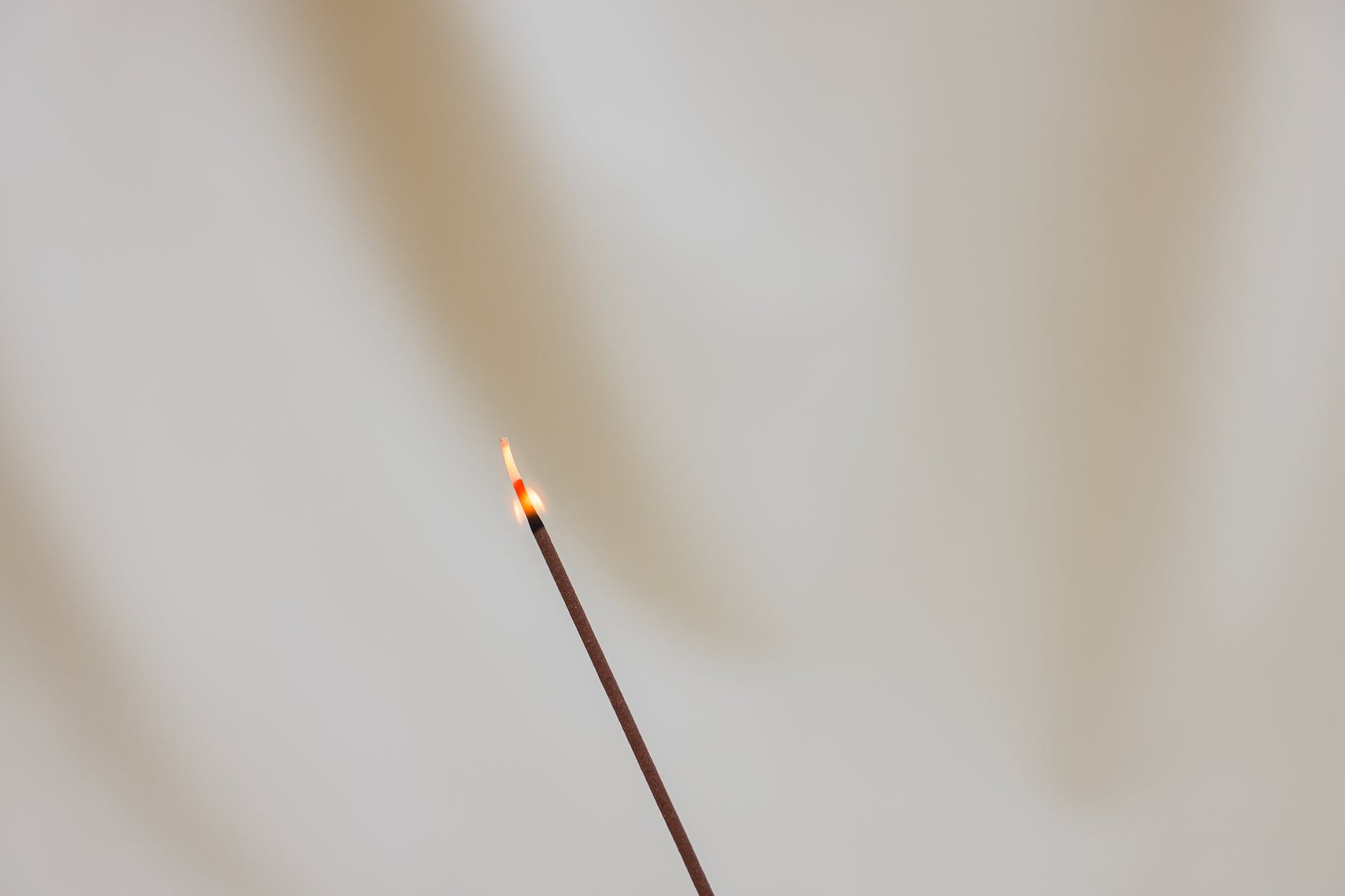
Wood burning is an enjoyable method for crafting unique gifts. It can be utilized to produce a range of items such as coasters and trays. Ornaments are a sought-after gift choice and can be adorned with various pictures or festive designs. Additionally, you can create stylish bangles or earrings through wood burning. These pieces can be enhanced with delicate patterns or embellishments. Enhance your collection with decorative belt buckles using wood burning techniques.

Coasters personalized
Wood burning is an original way to personalize coasters. This ancient craft is quickly becoming one of the most popular DIY crafting styles. This method allows you to burn images onto wood, creating beautiful designs. The possibilities are limitless, whether you want to create a coaster for a friend, or add a personal touch on a gift.
A coaster can be made with just a date and a name, or it can be personalized with symbols and pictures. To play your favorite music, you can also put a Spotify code into the wood. Coasters personalized with your name and message are great for any occasion.
You can personalize your pattern to reflect you and your taste. You can choose between a number of quilt block designs and your own design. You can also burn a simple doodle on your coasters. If you want them to look like a quilt, you can make a series of circles and dots. Another great idea to personalize coasters is country decor.
Personalized spoons
First, you must select a design to use with your wood-burning spoons. Either draw the design on paper, or take a photograph. Use a pencil to trace the design onto the wood. To draw the design, use a Crayola pencil or a writing pencil. After you’ve created your outline add black ink.
Cut a piece of transfer tape slightly larger than your design . Next, apply the tape to the design and rub it to make sure it sticks. After the tape has adhered, flip the design upside down and place it on top of the spoon’s head. This vinyl will not be able to lay flat on a curved surface. It will likely have some wrinkles. These can be removed later.
There are many options to ensure safe wood-burning spoon foods. There are many sealers available, including Tung Oil. It can be applied directly to the wood burnt area or to the whole wooden spoon. Some designs are floral or botanical in nature.
Tin cans personalized
Tin cans can be customized in many ways. You can paint them, or use decorative tape to add color and pattern. They can be labeled with a unique brand name. To add some flair, you can decorate the cans with sequins or beads.
Tin cans can be personalized for many purposes. They can be used to make pencil holders or flower vases. You can make a simple tin can a keepsake for special occasions such as weddings and birthdays. It can be personalized with a message or illustration.
Another great wood-burning idea? Personalizing jewelry. It is possible to create earrings that are unique for any occasion, including Valentine’s Day and Halloween. These earrings can be made in many ways, and you could even learn calligraphy. You can also use the same technique to personalize a wooden container. Melissa Esplin has a great tutorial on how to use this technique.
Personalized trays
A wooden tray is a beautiful and unique gift idea. You can stain wood any color you like and have a message inscribed on it. Wooden trays can be personalized with a message or personalization to make unique gifts.
These personalized trays make wonderful gifts for weddings, new parents and roommates. These trays can be made from solid wood or a medium walnut stain. You can personalize the tray with the name of the couple, or the year that the family was established. This is a unique gift idea that will make a great gift for weddings, new parents, and roommates who feel they are part of the same family.
Wood-burnt serving trays are a unique way to present food. You can use one to serve sandwiches. You can customize them to fit the needs of each recipient.
- About the Author
- Latest Posts
Introducing Ron, the home decor aficionado at ByRetreat, whose passion for creating beautiful and inviting spaces is at the heart of his work. With his deep knowledge of home decor and his innate sense of style, Ron brings a wealth of expertise and a keen eye for detail to the ByRetreat team.
Ron’s love for home decor goes beyond aesthetics; he understands that our surroundings play a significant role in our overall well-being and productivity. With this in mind, Ron is dedicated to transforming remote workspaces into havens of comfort, functionality, and beauty.
-

 Vetted4 days ago
Vetted4 days ago15 Best Boxwood Varieties for Thriving in Full Sunlight
-

 Vetted1 week ago
Vetted1 week ago15 Best Ways to Label Clothes for Nursing Home Residents – Stay Organized and Efficient
-

 Vetted6 days ago
Vetted6 days ago15 Best Dryer Vent Hoses to Keep Your Laundry Room Safe and Efficient
-

 Vetted6 days ago
Vetted6 days ago15 Best Spider Sprays to Keep Your Home Arachnid-Free
-

 Vetted5 days ago
Vetted5 days ago14 Best Cleaners for Aluminum Surfaces – Shine Bright Like a Diamond
-

 Vetted5 days ago
Vetted5 days ago15 Best Nightstand Charging Stations to Keep Your Devices Organized and Ready to Go
-
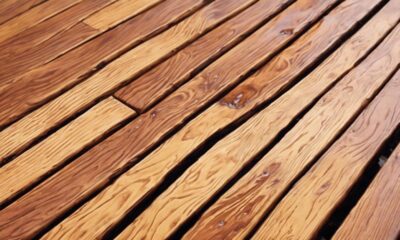
 Vetted12 hours ago
Vetted12 hours ago15 Best Ways to Waterproof Wood for Ultimate Protection and Longevity
-

 Beginners Guides4 days ago
Beginners Guides4 days agoHow to Slow Down My Ceiling Fan to Reduce Wind Chill





